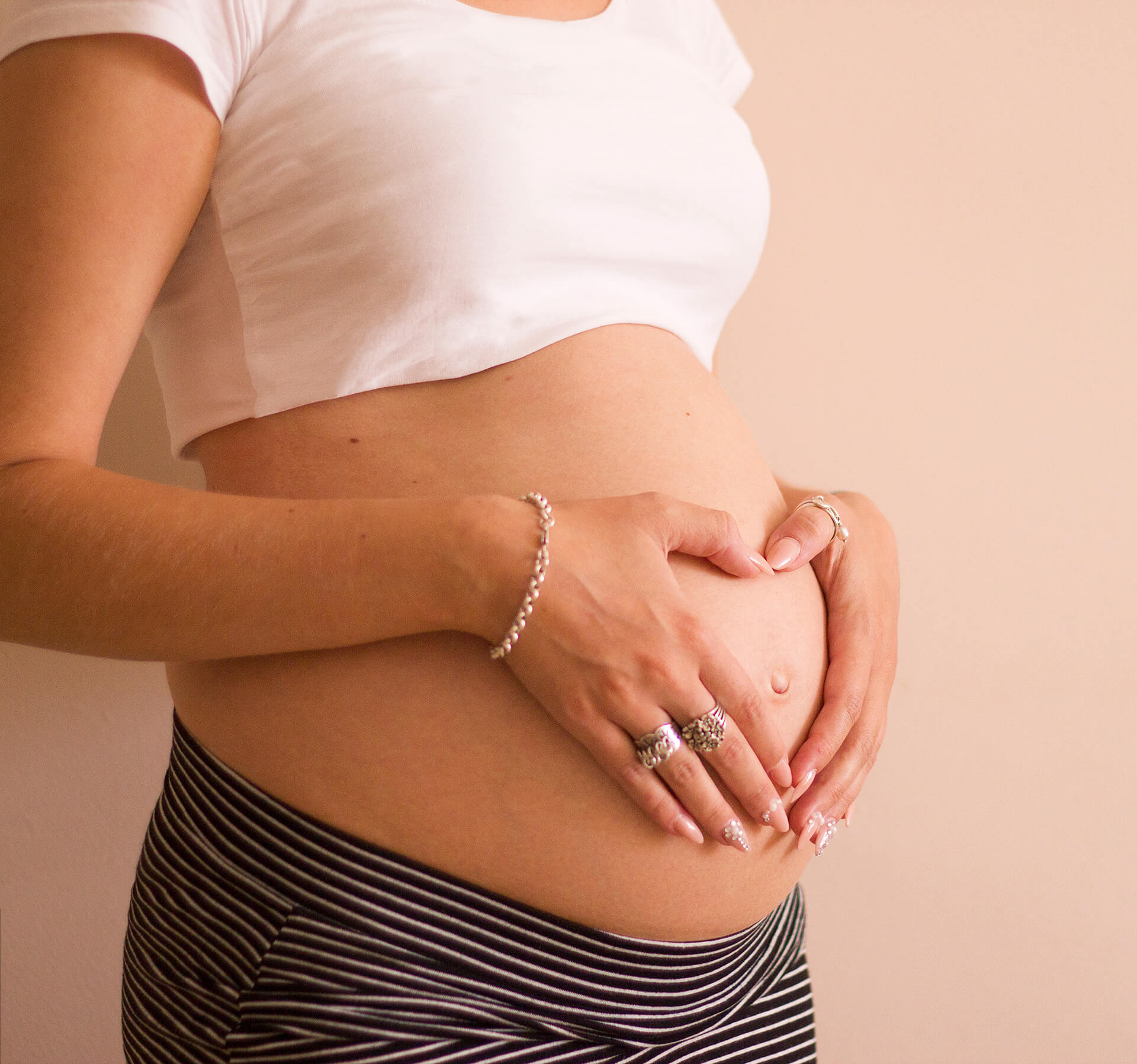Can I eat Chocolate with Gestational Diabetes?
The answer is, “Yes!” It is also, “No.” Read on to learn more about gestational diabetes mellitus (GDM) and how chocolate can play a role in your diet even if you have it.
What is Gestational Diabetes?
Gestational diabetes mellitus (GDM) only occurs during some pregnancies and is a temporary condition that disappears after pregnancy.
Unlike Type 1 Diabetes (T1D), in which insulin production ceases because the pancreas stops producing insulin completely and forever, gestational diabetes is not caused by a decrease or absence of insulin production but by an increased demand for insulin at a time when pregnancy hormones produced by the placenta diminish insulin’s effectiveness; essentially, those with GDM are unable to produce enough insulin to compensate for the resistance. The hormones that create insulin-resistant are less present in the first trimester of pregnancy, and increased insulin is required starting around week 20 to 24 of the pregnancy. Thus, because baby’s vital organs and development has already happened in the first trimester, gestational diabetes does not seriously threaten the baby. If gestational diabetes is going to develop, it is usually detected between weeks 24 and 28 of pregnancy and persists until delivery.
The Role of Insulin
Our cells require glucose as fuel to operate. Glucose comes from carbohydrates that are broken down into sugars during digestion and enter our bloodstream from the gut. Glucose travels to all our cells to feed them so they work. All our bodily functions, including heartbeat, breathing, moving, thinking, communicating, and living require fuel in the form of glucose.
However, to get into cells, glucose must have a key to open the door to the cell. Insulin is that key. Insulin allows glucose to enter the cells. If insulin is absent, the cells start to starve. They signal the brain that they need more sugar. The brain tells the body to get more glucose in the bloodstream (by using stores in the body and signaling hunger so we eat) and insulin into the bloodstream to feed the cells.
If insulin is not present along with the glucose or is not recognized by the cells as a key to let in the glucose, blood glucose levels rise cells starve. The body starts burning fat and muscle tissue to try and feed the cells (keto-acidosis). If this state continues, the cells – and eventually the body – will die.
Gestational Diabetes:
- Begins between weeks 24 and 28 of pregnancy.
- Disappears after delivery.
- Happens in about 7% of pregnancies (incidents vary by region)[1].
- May or may not require the administration of insulin by injection or insulin pump.
- Will require a change in diet.
- Will require increased monitoring of the pregnancy and testing (generally, more frequent blood testing, including self-monitoring).
- Unless undiagnosed or untreated, does not threaten the baby or mother.
- If poorly managed, may result in a heavier baby (over nine pounds).
- If poorly managed, may result in a sudden drop in baby’s blood sugar after birth.
Who Gets Gestational Diabetes Mellitus?
In North America, approximately 7% of pregnancies involve gestational diabetes. While diagnosis is done through blood tests, there are some conditions that make some women more prone to developing gestational diabetes than others, including:
- Being overweight or obese
- Family history of diabetes
- Pre-diabetes diagnosis (also known as impaired glucose tolerance)
- Age (those over 25 have a higher risk to develop gestational diabetes)
- Race (Middle Eastern, North African, South-East Asian, Western Pacific, and South American descendants are more likely to develop gestational diabetes).
- Having had previous births where the baby was over 9 lbs (4.1 kg) in weight.
Does Gestational Diabetes Affect My Baby?
In almost all cases, GDM is not evident until after the first trimester of pregnancy, which is the most critical to development of a health fetus. Normally not starting until near the end of the second trimester or the beginning of the third trimester, the higher levels of glucose in mama’s blood does not cause any birth defects or threaten the baby’s development.
However, if left undiagnosed or untreated, gestational diabetes can result in babies being overweight at birth (over 9 pounds) and/or experiencing a severe drop in blood sugar after birth, which may need attention from doctors.
What Can I Eat When I Have Gestational Diabetes?
If you are diagnosed with gestational diabetes, you will be required to pay more attention to your diet, since blood sugars are directly affected by what we eat. You will likely need to monitor how many carbohydrates you eat. You will likely be required to check your blood sugar levels throughout the day, using a blood glucose monitor, to ensure they do not go too high. You may have to increase your exercise, particularly after meals.
Some with gestational diabetes can control their blood sugar levels with diet and light exercise while others may need to start taking insulin by injection or insulin pump until the baby is born. Having to take insulin does not mean you are not eating properly or that you are not exercising enough – it means that your body is having a harder time producing enough insulin to overcome the effect of the pregnancy hormones causing the resistance to insulin. It also does not mean that you will become T1D after the pregnancy or later in life (there is some correlation to the incidence of Type 2 Diabetes, T2D, later in life for those who have gestational diabetes but there are many other factors that influence the onset, or absence, of T2D).
Gestational Diabetes and Chocolate
Many crave chocolate when not pregnant, let alone when pregnant! Those with gestational diabetes suffer all the same cravings that those without GDM do – but they are limited in what they can choose to indulge those cravings.
In general, those with gestational diabetes are instructed to eat complex carbohydrates (carbs that take a longer time to digest) over simple ones – and they are often told to avoid sweets, candy, desserts, sweet baked goods, and – yes – chocolate!
Dark chocolate is not only lower in sugar than milk (and white) chocolate, but also better for you. Ross Chocolates has a range of sugar-free chocolates that are a good alternative whether you like dark or milk chocolate. The important thing is to read labels to determine with what chocolate is sweetened (all chocolate bars and treats, even dark ones, are sweetened). Glucose, sucrose, fructose, lactose, and other ingredients ending in ose are sugars and should be avoided when living with gestational diabetes. Even natural sweeteners, like honey, agave, and other fruit juices need to be avoided, as do dried fruits within the chocolate bar or treat (raisins, dates, mangoes, bananas, etc., even cranberries should be avoided) because the sugar content of dried fruit is very high and enters the bloodstream very quickly.
Sugar alcohols (usually ending in tol) are safer to eat because they are digested differently and usually have very little impact on blood sugar levels but most sugar alcohols (mannitol, maltitol, sorbitol, etc., may have nasty effects on your digestive system, causing bloating, gas, diarrhea, and even nausea.
Only the sugar alcohol erythritol has no impact on blood sugars or our digestive system (unless someone is fructose intolerant, then some discomfort may occur). Erythritol, stevia, and monk fruit are the only natural sweeteners that do not impact blood sugars and do not cause other concerns. Be sure to read the ingredients list and the nutritional charts on any chocolate that you buy.
Ross Chocolates and Gestational Diabetes
Our Ross Chocolates No Sugar Added/Sugar Free Dark Chocolate has been scientifically proven to not affect blood sugar levels[2] because it is sweetened with stevia and a touch of erythritol. We carry three flavors of dark chocolate in bars and minis: plain Dark, Dark with Sea Salt, and Dark with Hazelnuts. Our Ross Chocolates Baking Chips are also dark chocolate and our soon-to-be-released Chocolate-Covered Almonds are made with dark chocolate, as well.
All our dark chocolate choices are safe to eat in appropriate quantities during pregnancy – with or without gestational diabetes – because they have the benefits of dark chocolate without any sweeteners that raise blood sugar levels. Just remember when you have the chocolate craving with gestational diabetes that chocolate is a treat and should be eaten in single serving amounts.
[1] Zhu, Y., Zhang, C. (January 7, 2016). Prevalence of Gestational Diabetes and Risk of Progression to Type 2 Diabetes: A Global Perspective. Current Diabetes Reports. 16(1);7. Retrieved on October 28, 2021 from https://www.ncbi.nlm.nih.gov/pmc/articles/PMC6675405/
[2] Scientific Research completed by UBC Department of Food, Nutrition and Health, Dietetics conducted a study in 2020/21 that will be published soon.






0 Comments